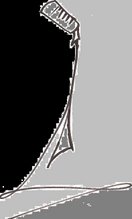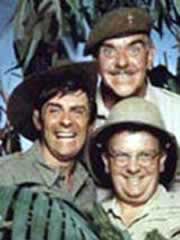

After a sell out tour, the long awaited solo album from David Gilmour, landed on our shelves this year proving to his long standing fan base that this middle aged ‘grumpy old man’ can still make the grade by giving us music to dream, reflect and inspire by. The self composed ‘On An Island’ is a imaginative collection of instrumental and vocal pieces by the man who became the guitar and the voice behind Pink Floyd.
Appearing, primarily back in the mid to late Sixties as one of a long list of self imposed ‘Super groups,’ this stadium filling band compiling of ordinary looking, exceptional musicians, expanded into the progressive field of sectioning rock with European and electric themes thus creating pieces of extraordinary length and versatility.
Although there is nothing psychedelic of Syd Barrett influence about this album. What we experience with this album is fundamentally the pure essence of what Pink Floyd grew into after the departure of Barrett. Gilmour, who was the very pinnacle of the bluesy era of Pink Floyd, transcends into this amazing piece of solo work.
Without trudging our way through the long life of Pink Floyd, we cut to the chase, albeit, rather abruptly and perhaps coldly to acknowledge this album. We must, yes, remember from whence this sound came from, however, we must stand and recognise this solo artist for what he presents himself as today. Which, is the name of Dave Gilmour, not Pink Floyd.
If a unique album unmatched by any other contemporary artist places itself at the mercy of the buying public, it needs an equally individual package. Gilmour presents this album as a hard back book in which, is typed, on a very old typewriter, simple indications of the reflective artist within. Each page is ‘stained’ around the edges to create the impression of something old and well thumbed. The pages consist of lyrics to each track (where appropriate) edged by simple photographs and pencil drawings. No unlike the composition titled ‘In His Own Write’ by John Lennon. The layout is very much the same. It is, without a doubt, a sleeve that depicts a very personal account of these tracks. Each picture meaning something, we know not what, all the same, we feel as if we are stepping into a reality of what actually is the visual basis of this fantastical music.
In Castellorizon,’ we do, it would seem, here the very openings to ‘Machines,’ which appears on Pink Floyd’s 1975 album, ‘Wish You Were Here.’ What we also experience is a piece full of fragmented sounds. It is only after a time, were are pierced by the first notes of Gilmour’s guitar. Accompanied by a host of emotional; strings, it is rather like listening to the incidental music of a film where the subject is a broken heart left in the pouring rain. We are gently led into the vocal piece of the second track of ‘On An Island.’ We note here that he is helped out in backing vocals of David Crosby and Graham Nash. If Pink Floyd fans are taking note then these latter two names will be of no surprise. Written by Gilmour and Polly Samson, it is a long and winding piece of rolling guitar riffs and electronic themes gentle twisting around each other in true Gilmour style. This actual piece leaves very little to the imagination, so this piece will, to many be rather predictable.
Gilmour takes us through to another soporific journey into the darkest corners of his artistic mind in this track called ’The Blue.’ Swooning and dreamy, we are transported from Pink Floyd into the world of Gilmour, as a man standing alone. He pours his heart and total soul into these pieces that they must be listened to with concentration and an open mind. For any who will be experiencing Gilmour for the first time, they must be prepared to hear something that they have never heard of eve will again. Gilmour has to be the only guitarist who can change a mood in an instant and take his listeners soaring above the clouds to planes of realism they have never known before.
We may have been led into a false sense of security until this next piece of mechanical interest. ‘Take A Breath,’ will probably be good advice to most listeners. Thunderous and truly an exponent of this album, we feel charged up like robots ready to take commands. The guitar element is cold and lacks emotion of any form. The string only add to the intense feeling of desperation in this piece. It gives a feeling of climbing up a huge mountain. The whole effect of this piece is held together by diligence, courage and determination. Gilmour can whip up the rawest of feelings in his listeners. A piece that will leave you feel knackered! It is with a light relief that we are floating with the clouds on the next piece entitled ‘Red Sky At Night.’ Gilmour delights us in his ability to pick any instrument and play it. He can touch a saxophone just the same way as a guitar and make it come alive. This piece is full of slow, wandering notes of sadness and tranquillity. The concept of this piece is completely atmospheric, taking the listener in a state of peace and forming visions in the mind of stillness like deep, mysterious pools of thought. We are then brought up to speed by a rumbling drum theme with slide guitar. The vocal is echoed and we feel a gritty sultry theme enhanced by strong riffs and swaying strings. Gilmour shows us is true bluesy roots in a subject that he only touched upon in his days of being a member of Pink Floyd.
The opening of ‘This Heaven,’ appears in the shape of the opening track of ‘Wish You Were Here,’ from the titled album, already mentioned. Written by Gilmour and Polly Samson, we can now see her influence on certain pieces that she co wrote. She brings to her work an element of calmness. Like dampening down the rawness of Gilmour’s solo compositions, she brushes away the edge of his work. This gentle, slide guitar piece takes a slow form using well known artists appearing as musicians in this track. We note, Georgie Fame on Hammond organ and also, this piece uses ‘drum samples of Adam Topol and Jack Johnson. Gilmour, throughout this album picks up a variation of different instruments including, not just guitar but bass, percussion, organ and electric piano. He uses his featured musicians in the same way as we know Eric Clapton does in his work. Moving, without us actually knowing, this piece glides into the next track entitled ‘Then I Close My Eyes.’ Gilmour’s vocal on this piece is at its most prominent throughout the album. He picks us bass harmonica and cumbus. It also features B J Cole on Weissenborn guitar which gives us a country styled Fleetwood Mac approach. It is this guitar that leads us through from the modern, electronic tracks to this traditional, Southern country theme that could have appeared on a Willie Nelson album. Yet still, we are in a state of euphoria. The very excellence of this album is born from Gilmour’s knowledge and experience of experimenting with instruments and sounds from Pink Floyd.
It is hard not to mention this ‘super group’ when listening to the solo work of a member. We devise a theme from hearing such an artist from such a band when trying to focus on recognising the artist rather than just hearing a variation of the band that we already know. ‘Smile,’ is as it would appear. Simple with a silent, single piano anthem. The keys are touched with such a feather like approach. We wonder what way going through his mind when composing such soulful pieces. They appear to us to be born from such great loss or sadness. If your mood was already on a lift at the beginning of this album, then I can assure you that you will be reaching for your hankies by the end of it. Polly Samson, the co writer and major influence behind this album, appears on vocal along with Gilmour.
Their next piece is entitled ‘A Pocketful Of Stones.’ We note Leszek Mozdzer on piano, Lucy Wakeford on harp and Alasdair Malloy on glass harmonica. We actually don’t recognise easily these peculiar instruments but their influence must be present somewhere. It may take a few listens to this album to start to form recognitions of these instruments. As we would listen intensely to Pink Floyd albums, we here, should do the same. Again, we are lead, in an entranced state into the final piece ‘Where We Start.’ A gentle, melodic piece that takes us to the end of this unusual album.
Where Pink Floyd was experimental and diverse, we find Gilmour in his twilight years here on a very strong reflective note. We can almost imagine the audience at the Albert Hall not even daring to cough during the performance with the same in trepidation as daring to breath to heavily during a snooker final. This may not be to everyone’s taste and many, who may not be of a certain age, will want to turn this album off as quickly as they might have bought it. It is food for the soul rather than music to the ears. It will transform you, take you gentle by the hand and guide you to somewhere within yourself that you’d rather not want to be. We therefore, need to be open to experiencing something that could cause you to think about certain things in your life that you would rather forget, but that is the beauty of Gilmour. He can touch on certain nerves in your spine and force to you to experience all different kinds of emotions that you wouldn’t normally feel.
It is, on conclusion, a lot cheaper than fifty pounds an hour at your shrink. Any decent one would suggest that you keep your money and buy this album instead. It will probably change you, but if you are of a unpredictable nature, and you don’t fancy chicken soup, then pick up a copy of this album and demand a hug from the nearest person.
You’ll feel a whole lot better.
All songs written by Gilmour/Gilmour Samson
Orchestra recorded at Abbey Road Studios.
EMI records
Dave Gilmour - vocals, guitar and various other instruments
Polly Samson - vocals
Andy Newmark - drums
Guy Pratt - bass
Chris Thomas - keyboard
And many others featuring David Cosby, Graham Nash, Georgie Fame and Jools Holland on piano on ‘The Blue.’
2006 David Gilmour Music Ltd.
Bought at Virgin Megastore £9.99 (all chart CD’s at Virgin, this price)
www.davidgilmour.com
©M. Duffy (sam1942) 2006.
Friday, March 09, 2007
His Island...
Posted by
Michelle Duffy
at
Friday, March 09, 2007
![]()
Subscribe to:
Post Comments (Atom)






No comments:
Post a Comment